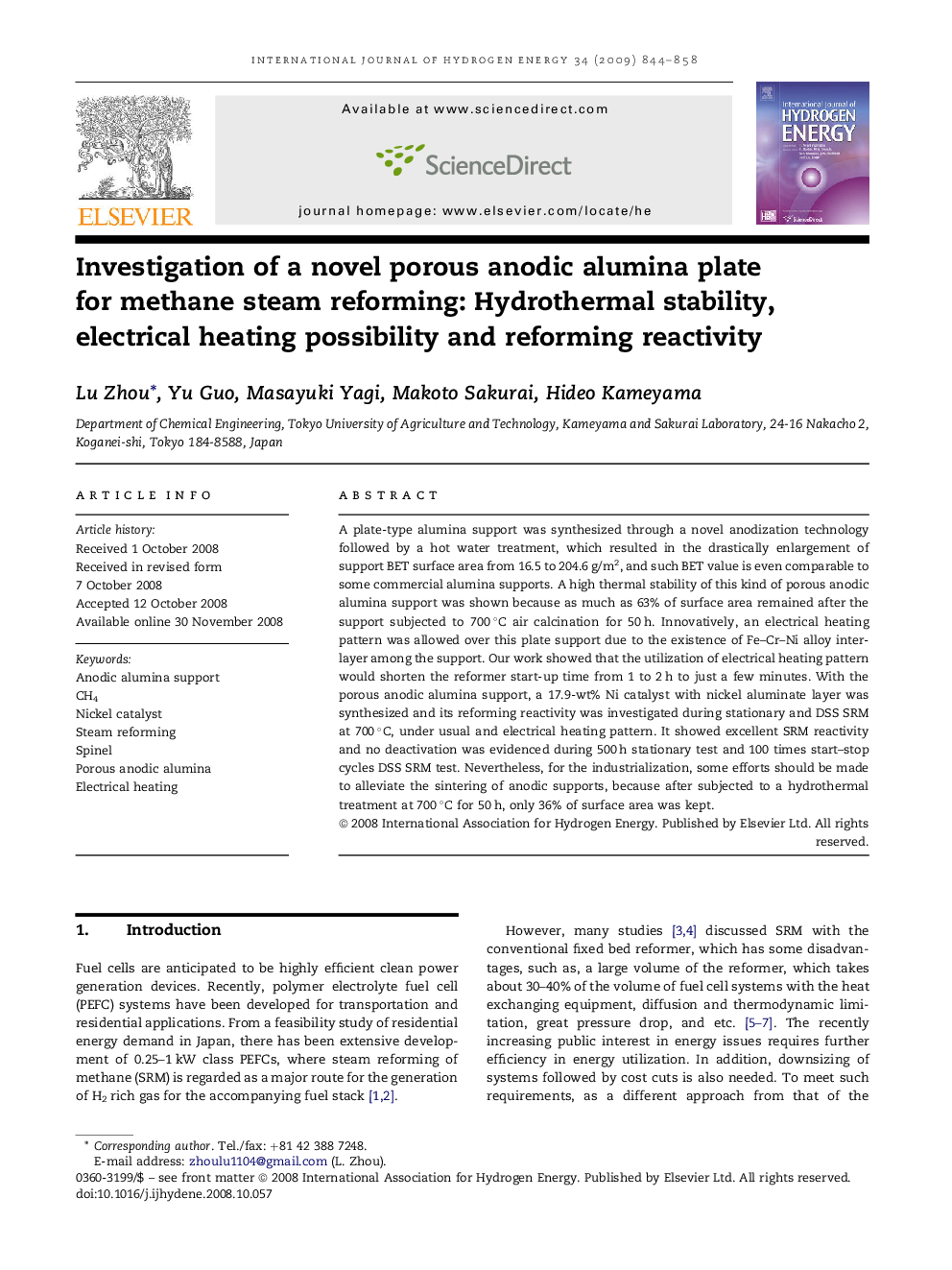| Article ID | Journal | Published Year | Pages | File Type |
|---|---|---|---|---|
| 1283468 | International Journal of Hydrogen Energy | 2009 | 15 Pages |
A plate-type alumina support was synthesized through a novel anodization technology followed by a hot water treatment, which resulted in the drastically enlargement of support BET surface area from 16.5 to 204.6 g/m2, and such BET value is even comparable to some commercial alumina supports. A high thermal stability of this kind of porous anodic alumina support was shown because as much as 63% of surface area remained after the support subjected to 700 °C air calcination for 50 h. Innovatively, an electrical heating pattern was allowed over this plate support due to the existence of Fe–Cr–Ni alloy interlayer among the support. Our work showed that the utilization of electrical heating pattern would shorten the reformer start-up time from 1 to 2 h to just a few minutes. With the porous anodic alumina support, a 17.9-wt% Ni catalyst with nickel aluminate layer was synthesized and its reforming reactivity was investigated during stationary and DSS SRM at 700 °C, under usual and electrical heating pattern. It showed excellent SRM reactivity and no deactivation was evidenced during 500 h stationary test and 100 times start–stop cycles DSS SRM test. Nevertheless, for the industrialization, some efforts should be made to alleviate the sintering of anodic supports, because after subjected to a hydrothermal treatment at 700 °C for 50 h, only 36% of surface area was kept.
